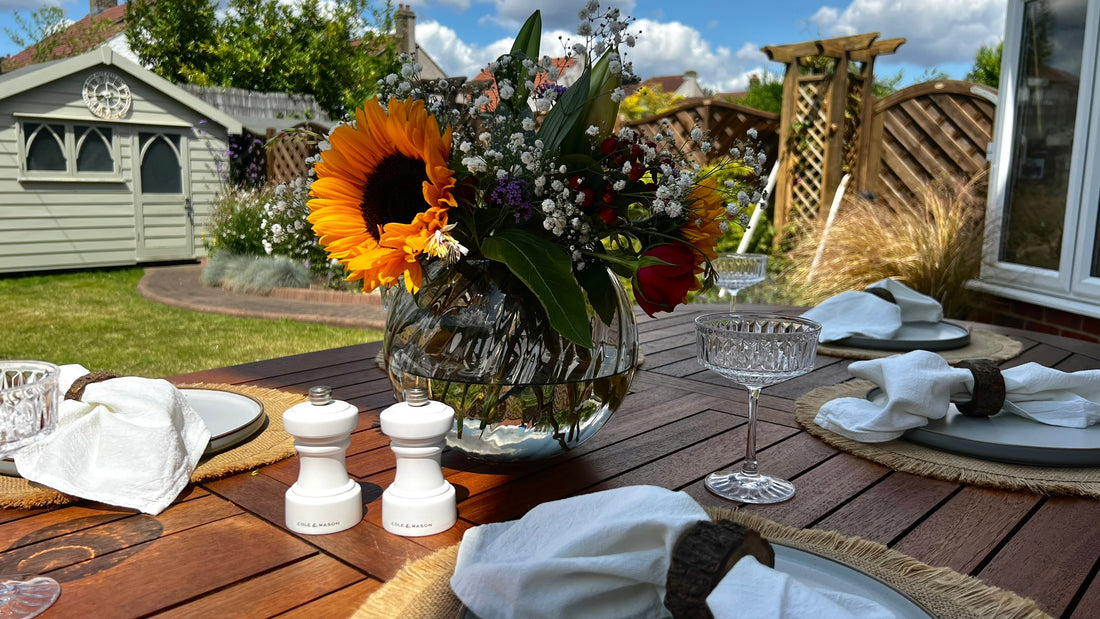
By Katrina Lander
You can’t not love alfresco dining, whether it’s in the peak heat in the middle of the day, or in the evening when it’s still warm enough to enjoy a meal outside.
As well as beautiful and colourful salads, fresh vibrant herbs and pretty cocktails, there’s nothing quite like making your own flower arrangement for the dinner table.
See my tips below on how to create your own summer flower arrangement:
- Choose a theme
Shops have a range of flowers, which can make it a little overwhelming if you go there with no idea of what you are looking to create. It’s always a good idea to choose a main colour (or two) or a larger flower you know you want to include in your arrangement before purchasing any blooms, having a starting point and knowing roughly what colours and/or flowers you want to include creates a base and gives you something to work around. For me, a summer flower arrangement is all about the bright colours.
- Large flowers are key
Choosing a larger flower (in my case, a sunflower) will give you a good place to start and acts as the focal point. As you’re making an arrangement in the summer season, I don’t think you can go wrong with any large bright flower.
Once you’ve chosen your larger flower, it’s time to choose your slightly smaller flowers to give more colour, variety and texture - Roses, Tulips and Ranunculus’ are a few examples.
- Foliage
The last component to your flower arrangement will be foliage and your smaller/delicate flowers. In the summer months I love to use Gypsophila (mainly known as Gyp) the Gyp really compliments the other colourful flowers and adds some dimension to the arrangement, Gyp is also more affordable.
There’s nothing better than using your own home-grown flowers (or your family/friends if they don’t mind you cutting a few stems) they’re great to use to fill out your arrangement like I have in mine – and they’re completely free.
- Arranging your flowers
I always start with my largest flower and work my way down through to the slightly smaller flower, and finally your foliage/more delicate flowers. Depending on the type of vase you have chosen and the arrangement you are going for will depend on the length you cut the stems. Ensure to cut the stems at an angle and remove any leaves that will fall within the water in the vase.
When arranging my flowers in a vase I like to overlap the stems and continuously turn the vase to make sure each section is full and balanced. The arrangement doesn’t need to be perfect, in fact I recommend adding variety, different colours and height.
Don’t feel the need to push your flowers down to the bottom of the vase, if the stems aren’t very long but you want to create some height, or you want to have the flowers falling over the vase, as long as the stems are in water you don’t need them touching the bottom of the vase – as I wanted my foliage, and flowers picked from the garden to slightly hang over the vase I left these from touching the base.
Have fun making your flower arrangement, and be creative, use what you have (or what you can ‘borrow’ from a family/friends garden and enjoy how they finish decorating your dinner table.

